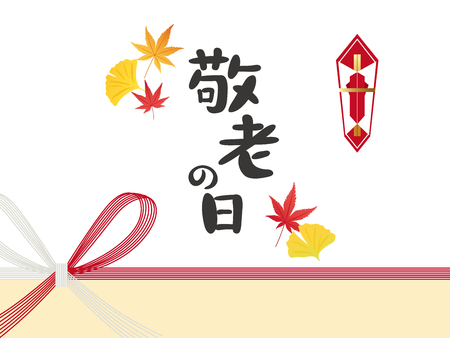Setting the Scene: Britain Before Feng Shui
Before the subtle whispers of Feng Shui ever drifted across the English Channel, Britain’s landscapes were already humming with their own ancient energies. Imagine a land draped in rolling mists, where emerald hills stretch beneath an ever-shifting sky and centuries-old oaks stand sentinel over patchwork fields. The scent of damp earth mingled with woodsmoke would greet you at every turn, while the haunting calls of distant curlews echoed across wild moorlands. Within these living tapestries, British homes took root—not as random shelters, but as living spaces shaped by deep connection to land and lore.
Step inside a traditional cottage and you’d find thick stone walls, low timber beams, and hearths that radiated more than warmth—they were the heart of family life and spiritual protection. Windows framed misty mornings or golden sunsets, each pane reflecting not just the weather outside, but also the mood within. The arrangement of furniture was practical, yet quietly reverent; chairs clustered near the fire for storytelling, beds placed away from draughts believed to carry unseen spirits. Every corner held echoes of ancient beliefs—herbs hung above doorways to ward off ill luck, horseshoes nailed with care to summon fortune.
Spiritual customs in pre-Feng Shui Britain wove together threads of Christianity and older pagan traditions. Sacred wells bubbled in hidden glades, their waters whispered over by those seeking healing or prophecy. Great stone circles—like Avebury and Stonehenge—stood as silent witnesses to rituals that marked the turning of seasons and the mysterious dance between earth and sky. People sensed energies in the lay of land: some hills felt watchful, some woods forbidding, some streams blessed. Folk wisdom urged respect for these invisible forces; neighbours exchanged tales of fairy paths best left untroubled and trees that should never be felled.
This was a world alive with sensory meaning—a place where every texture underfoot and every flicker of candlelight carried significance. Before Feng Shui’s arrival, British people already moved through their days guided by intuition, tradition, and an unspoken dialogue with their environment. Their landscapes and homes were not just settings for daily life but sacred participants in it—each one holding space for spirit, story, and possibility.
2. First Whispers: Early Encounters and Curiosities
In the quiet hush of the late 17th and early 18th centuries, as British ships cut across silvery seas toward distant shores, something subtle began to stir beneath the bustle of trade and exploration. The first encounters between Feng Shui and British traditions were not grand or overt; rather, they arrived as faint whispers—curiosities tucked within merchant tales and the observations of intrepid explorers returning from China’s bustling ports.
It was in these moments, over candlelit maps and steaming cups of tea, that British traders found themselves captivated by stories of “wind and water” shaping Chinese cities, gardens, and homes. They noticed the way merchants in Canton oriented their shops for prosperity or how grand houses seemed to harmonise with surrounding hills and rivers. At first, these ideas seemed foreign—a charming oddity from a distant land—but soon they piqued the imaginations of those eager to unlock new forms of fortune and harmony.
The Subtle Exchange
As relationships between Britain and China deepened through commerce, snippets of Feng Shui philosophy filtered into polite conversation among London’s elite. Letters home described peculiar rituals witnessed in far-off markets, while imported porcelain vases were admired not just for their beauty but for their placement within a room. The fascination grew quietly, almost imperceptibly, weaving itself into the fabric of curiosity that defined this age of discovery.
Encounters at a Glance
| Year | Event | Feng Shui Influence Noted |
|---|---|---|
| 1699 | First British East India Company voyage to Canton | Observations of city planning aligned with natural features |
| 1720s | Letters from missionaries and diplomats circulate in London | Descriptions of home arrangements for luck and health |
| 1740s | Porcelain imports rise in popularity | Budding awareness of object placement and auspicious symbols |
A Meeting of Worlds
This era was marked by a gentle blending rather than a collision—British sensibility embracing novelty without yet fully understanding its roots. The first whispers of Feng Shui did not seek to uproot tradition but instead offered a new lens, inviting Britons to consider the energy flowing through spaces both familiar and unknown.

3. Victorian Fascination: The Age of Orientalism
As the 19th century unfurled its silken banners across the British Isles, a certain feverish curiosity swept through drawing rooms and parlours—the allure of the mysterious East. The Victorian era, with its empire ever expanding, found itself enamoured with Orientalism: a romanticised vision of Asian art, philosophy, and tradition. It was during this age of discovery that whispers of Feng Shui first began to ripple through British society. Aristocrats, scholars, and collectors—clutching their imported porcelain and lacquered screens—were captivated by tales of ancient Chinese wisdom shaping lives and landscapes. Yet, in their eagerness to embrace these ideas, the Victorians often misunderstood the very essence of Feng Shui. They saw it as exotic superstition or whimsical decoration rather than a deeply spiritual practice rooted in harmony with nature’s energies. Drawing inspiration from Chinoiserie—a European interpretation of Chinese aesthetics—Victorian households began incorporating elements like pagoda-shaped garden ornaments and ‘luck-bringing’ dragon motifs, believing they were inviting prosperity and balance. However, these gestures were often more theatrical than authentic, filtered through a lens of fantasy rather than true understanding. Still, this first encounter left a subtle but lasting trace: a seed planted within British traditions that would slowly germinate as cultural exchange deepened in the decades to follow.
4. Blending Energies: British Interpretation and Adaptation
Imagine the soft hum of a London morning, where the gentle order of Victorian gardens meets an unexpected whisper from the East. As British society grew ever more curious about global traditions in the late nineteenth and early twentieth centuries, Feng Shui’s philosophy began to trickle into local consciousness. At first, it seemed like a curiosity—an exotic footnote in travel journals or drawing room discussions. Yet, with time, its subtle wisdom started weaving through the fabric of British life.
Consider the grand old country houses that once followed strict symmetry and rigid lines. As tales of Feng Shui spread among architects and aristocrats, some saw merit in balancing energy flow with the natural undulations of the land. The result? Gardens and interiors that felt less constrained, more harmonious—a gentle shift from control to collaboration with nature.
The British, always eager for a cup of tea and a good story, found themselves enchanted by Feng Shui’s blend of practicality and mysticism. They began experimenting: rearranging furniture for better “chi,” planting trees to shield homes from harsh winds, or even aligning water features with ancient Chinese advice. These adaptations weren’t mere mimicry; they were reinterpretations, tailored to Britain’s damp climate and love of tradition.
Feng Shui Principle |
Traditional British Equivalent |
How They Merged |
|---|---|---|
| Flowing Pathways | Meandering Garden Walks | Garden designs encouraged movement and contemplation |
| Water Placement | Ponds & Fountains in Manor Grounds | Locating water for both beauty and energetic harmony |
| Entrance Energy (Qi) | Main Door Placement & Threshold Rituals | Caring for entrances with symbolism and practical design |
| Clutter-Free Living | Tidy Parlours & Drawing Rooms | Emphasis on space clearing for peace of mind |
| Five Elements Balance | Use of Wood, Stone, Metal in Decor | Selecting materials to create visual and energetic balance |
Through stories passed down over garden gates and within city salons, Feng Shui became not simply an import but an inspiration—a quiet force that nudged British spaces toward greater vitality. It was never about abandoning heritage; rather, it was about opening doors (sometimes quite literally) to new ways of feeling at home within familiar walls.
5. Modern Reawakenings: Feng Shui in Contemporary Britain
Stepping into present-day Britain, the spirit of Feng Shui has been quietly woven into the fabric of daily life, often in ways as subtle as the shifting English weather. In the heart of London, young professionals and families alike find themselves drawn to concepts of energy flow and harmonious living spaces. Estate agents sometimes whisper about “good vibes” or “welcoming energy” when showing a Victorian flat with sunlit bay windows facing east, echoing ancient Chinese wisdom without ever naming it outright.
Across leafy suburbs and into rural villages, British homeowners are increasingly open to reimagining their space—rearranging sofas to avoid blocked doorways, painting walls in calming hues, or inviting more natural light inside. These choices are not just aesthetic but intuitive nods to a desire for balance and serenity amidst modern chaos. In countryside cottages, a pot of lavender on the windowsill might stand alongside a carefully placed mirror to reflect garden views, bringing what feels like a whisper of harmony from the outside world indoors.
The British approach to Feng Shui today is distinctly local and personal. Rather than rigidly following ancient rules, people blend principles with their own traditions—pairing Feng Shui’s emphasis on decluttered spaces with the quintessentially British love for eclectic antiques and family heirlooms. It’s not uncommon for a Georgian home’s drawing room to host both an inherited grandfather clock and a thoughtfully positioned water feature, believed to foster prosperity and calm.
This gentle resurgence is also fuelled by a growing wellness movement. From yoga studios in Bristol offering workshops on mindful interiors to online communities sharing tips for “energy-friendly” work-from-home setups, Feng Shui is interpreted through a contemporary lens—pragmatic yet poetic, spiritual yet grounded in daily reality. Even office buildings in Manchester might incorporate biophilic design elements inspired by Feng Shui ideals, striving for workplaces that nurture creativity and well-being.
Yet at its core, the British experience of Feng Shui remains deeply intuitive—a quiet conversation between old stones and new dreams, between tradition and transformation. Whether in bustling city flats or tranquil country homes, there’s an unspoken understanding that our surroundings shape our mood and fortune. The dance between East and West continues, not as a clash but as a gentle blending, evolving in step with Britain’s unique cultural rhythm.
6. Lingering Echoes: Spirituality, Place, and Belonging
As we reflect upon the soulful meeting of East and West, it becomes clear that Feng Shui’s arrival in Britain was more than a passing curiosity—it was a gentle ripple in the spiritual waters of British life. For centuries, the British have sought to create homes that are not only comfortable but also imbued with a sense of harmony and belonging. The subtle art of Feng Shui, with its ancient wisdom about balance and flow, found resonance here not because it was foreign, but because it mirrored something quietly familiar within the British spirit.
Feng Shui’s principles—attunement to landscape, orientation of buildings, respect for natural energies—echoed the old English customs of dowsing for water, arranging stone circles, and cultivating cottage gardens to foster well-being. This cross-pollination did not simply transform rooms; it prompted a gentle awakening to the soulful possibilities embedded in place. The British search for harmony at home became more than an aesthetic pursuit; it grew into an invitation to listen to the land and honour its quiet power.
This spiritual blending reveals a deeper truth: both traditions yearn for spaces that nurture the soul. Whether through the careful placement of furniture or the mindful tending of hearths and hedgerows, there is an abiding desire for sanctuary—a place where one feels at ease with both self and surroundings. In this mingling of East and West, a new tradition began to take root: one that values both heritage and openness, rootedness and transformation.
The echoes linger still in British homes today. A wind chime by a Georgian window, a jade plant on a Victorian mantelpiece, or a front door painted auspicious red—all are quiet testaments to this ongoing conversation between worlds. Through such details, modern Britons continue their search for harmony, guided by both ancestral memory and newfound wisdom. In this way, Feng Shui’s legacy is not just about arrangement; it is about belonging—an ever-evolving journey towards wholeness within four walls.


